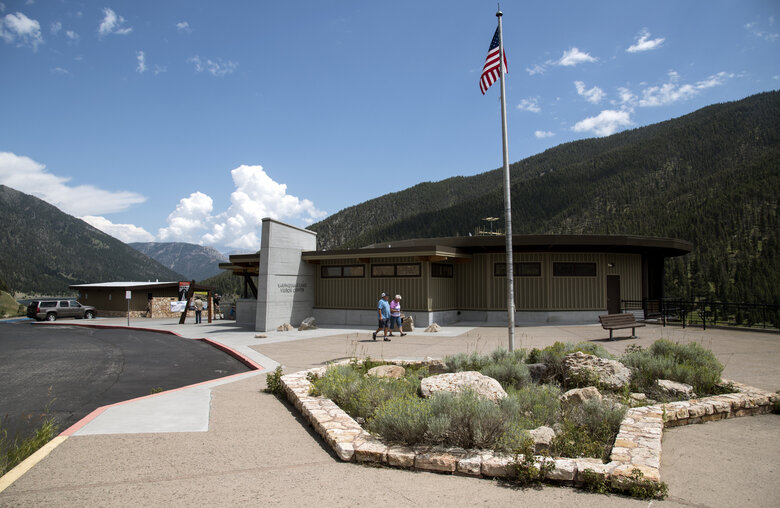Earthquake Lake, Montana
If you’re planning a trip to Yellowstone National Park, I would highly recommend a 27-mile detour northwest of West Yellowstone, Montana on U.S. 287. You’ll pass by Lake Hebgen, a beautiful medium sized Lake that is fed by the Madison River and formed by the Hebgen Dam where the Madison continues its flow north to the headwaters of the Missouri River.
Lake Hebgen, Montana. Credit: www.visityellowstonecountry.com
After passing Lake Hebgen on U.S. Highway 287 you will find an amazing story that very few people seem to know about, other than the locals. It’s the story of a 7.4 earthquake in the middle of the night in 1959.
Earthquake Lake. https://en.wikipedia.org/wiki/Quake_Lake
It was the night of August 17th about midnight when an earthquake centered near West Yellowstone triggered a massive landslide in the canyon that the Madison River flows through. That landslide caused half the mountain to come down and blocked the Madison River. The quake created a 20-foot shift in the floor of Lake Hebgen which caused a massive tidal-type wave that overflowed the dam, causing a rush of water that took many cabins and structures from their foundation. The landslide blocked the river which began forming what is now called Earthquake Lake, and buried forever 19 people who were camping along the Madison River. In all, 28 people died as a result of of the earthquake.
Landslide that blocked the Madison River, creating what is now Earthquake Lake. Credit: US Forest Service Museum
U.S. 287 along Lake Hebgen. Credit: US Forest Service Museum
As the lake continued to form because of the landslide and cause more threat, the Army Corps of Engineers worked non-stop for a month to provide an outlet for the river. With the river finally flowing again, the immediate pressure was relieved and the area infrastructure was rebuilt.
The story is documented at the Earthquake Lake Visitor Center, built on the landslide and overlooking Earthquake Lake. According to the information at the Visitor Center, Earthquake Lake will one day disappear and once again just become the Madison River, but the lake is still 190 feet deep.
Earthquake Lake Visitor Center. Credit: seattletimes.com
The Forest Service and the Yellowstone Foundation have done a fabulous job documenting what happened that night, including the eyewitness reports from survivors. They talk about the 100 m.p.h. wind that rushed through the canyon - strong enough to blow the clothes off people - and waiting out the darkness as the water continued to rise until rescue efforts could begin the next day. It is an amazing story told from first-hand accounts.
U.S. 287 near Hebgen Lake. Credit: US Geological Survey
Heading east on 287 towards West Yellowstone, you can stop at the Points of Interest where more of the story is told. Refuge Point, the highest point along the river, is where about 250 people gathered waiting for rescuers. Ghost Village can be reached by a 1/4 mile dirt road leading to the Madison River, where the remains of cabins sit that were washed away from their foundations and floated downstream, settling on the river banks as the water receded. They’re still there.
Ghost Village, along the Madison River. Credit: trailsoffroad.com
2019 was the 60th anniversary of the earthquake. For some of the survivors, it’s still just as fresh as it was 60 years ago according to this news report.
It’s important to hear these stories from a time when there wasn’t instant communication of any kind. It’s important to remind ourselves of the power of the forces of nature at work, and as much as we want to tame those forces, there are things that are well beyond our control. And for us, with as many visits as we made to Yellowstone National Park, this was one of those hidden gems we were glad to discover.
Want more Weird Places? Click here. Visit RVLivinFulltime.com for more information about the RV lifestyle. Like or share this post on Facebook.






